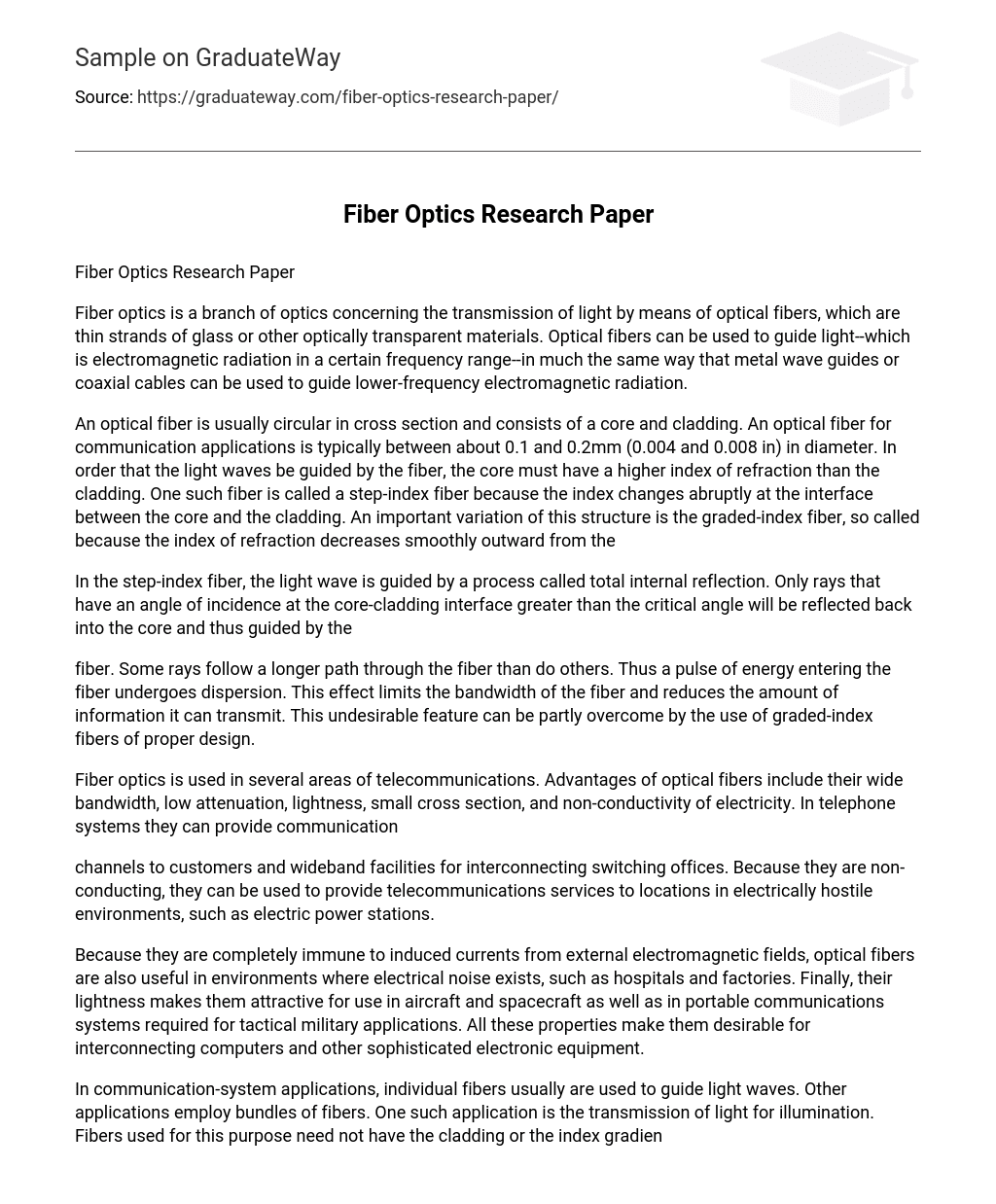Fiber optics is a subset of optics that focuses on transmitting light through optical fibers. These fibers, typically made of thin glass or other transparent materials, act as pathways for light transmission. Similar to how metal wave guides or coaxial cables direct lower-frequency electromagnetic radiation, optical fibers guide light within a specific frequency range as it is a form of electromagnetic radiation.
An optical fiber is typically circular and consists of a core and cladding. The diameter of communication optical fibers typically ranges from 0.1 to 0.2mm (0.004 to 0.008 in). To guide light waves through the fiber, the core’s refractive index must be higher than that of the cladding. This characteristic is exemplified by a step-index fiber, which shows an abrupt refractive index change at the interface between the core and cladding.
In the step-index fiber, light waves are guided through total internal reflection. Only rays with an angle of incidence greater than the critical angle at the core-cladding interface are reflected back into the core and guided through the fiber. Some rays have a longer path than others, causing dispersion of energy when a pulse enters the fiber. This dispersion limits the fiber’s bandwidth and reduces its information transmission capacity. Graded-index fibers of appropriate design can partly overcome this limitation.
Fiber optics finds application in various areas of telecommunications due to several advantages it offers. These advantages include wide bandwidth, low attenuation, lightness, small cross section, and non-conductivity of electricity. In telephone systems, optical fibers can provide communication channels to customers as well as wideband facilities for interconnecting switching offices. Additionally, their non-conducting property allows them to be utilized for telecommunications services in electrically hostile environments like electric power stations.
Optical fibers offer a range of benefits that make them desirable for interconnecting computers and other advanced electronic equipment. For instance, they are unaffected by induced currents caused by external electromagnetic fields, making them ideal for environments with electrical noise like hospitals and factories. Additionally, their lightweight nature makes them suitable for use in aircraft, spacecraft, and portable communications systems needed for tactical military applications.
In communication-system applications, light waves are guided by individual fibers or bundles of fibers. One such application that uses fiber bundles is the transmission of light for illumination. In this case, the fibers do not require cladding or an index gradient like single-fiber light guides because the light is guided by the index step at the glass-air interface. Another application of fiber bundles is image transmission. To achieve this, the fibers in the bundle must be arranged coherently, allowing for functions such as magnification, inversion, rotation, distortion, and scrambling of the image. These bundles are commonly used in medical endoscopes to view inaccessible areas. For high resolution, applications use fibers with diameters as small as 0.02 mm (0.0008 in). Fiber bundles are also utilized in photography, spectroscopy, and image processing.





